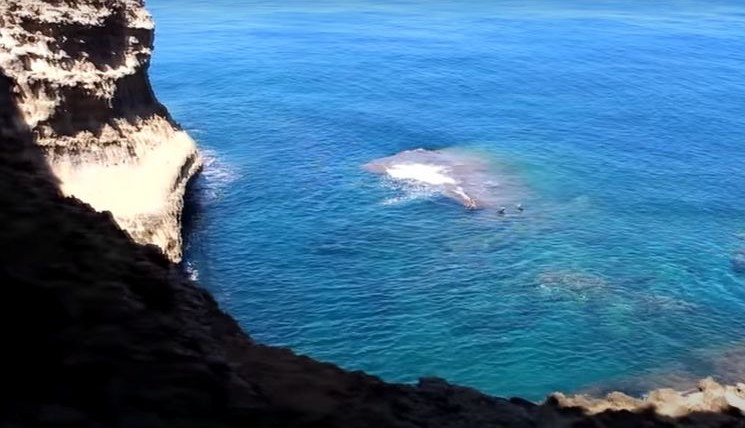Open to all, the exhibition encourages you to admire what you can. We’ll help you choose from the 35 sites scattered across the country.

The Aletsch glacier in a view by Genevan artist Nicolas Faure in a group show at the Aargauer Kunsthaus. Should we suspect this apparent calm or just enjoy a moment of beauty?
It doesn’t matter that three cantons are missing from the “Watching the glacier go by” line-up, because this summer’s 2024 event, on a scale Switzerland has never seen before, is indeed a national exhibition. Bernard Fibicher, former director of Lausanne’s Musée cantonal des beaux-arts, is not afraid to say so. Together with Geneva-based visual artist Carmen Perrin and Vaud-based essayist and journalist Lorette Coen, he has brought together more than 80 artists at 35 sites, from the Grisons, Aarau, Aletsch, Sion, Bern, Lausanne and Geneva.
Lucid about the retreat of the ice, informed and in touch with scientists, sometimes critical, without forgetting self-criticism, the sacred union was made in a “soothing” tone, deliberately other than that of catastrophism. In the memory of the romantics who drew from these seas of ice all the power of a gaze. Active, at the heart of today’s metamorphoses. Or forward-looking, and already… the day after. It’s said that some visitors have chosen to see everything, a challenge that’s hard to meet: we’ve come up with ten sites to help you vary your discoveries.
Lausanne: art and history

“Timelines, le glacier du Rhône 2019”, by Fabian Oefner at the Musée historique de Lausanne in an exhibition combining art, history and science.
As the capital of the Vaud region and home to a number of museums, Lausanne is showing its enthusiasm by taking a closer look at “the departing glacier”. Beginning with the Musée historique, which offers a rich mix of science, first-hand accounts, exploits and artistic perspectives. On the Plateforme10 site, while the Mudac’s participation in the event ends on August 4, the Musée cantonal des beaux-arts orchestrates a face-off between past and present, between the Rosenlaui glacier (BE), painted – dark and distant – by Diday in 1841, and the indefinite strangeness of the sounds emitted by Icelandic glaciers, recorded by the Scotswoman Katie Paterson and etched onto disks of frozen meltwater.
Until September 29 – www.mcba.ch/2024/07/regarder-le-glacier-sen-aller/ et www.lausanne.ch/vie-pratique/culture/musees/mhl/expositions/glaciers-un-monde-en-mouvement
Bern: time for commemoration

«Traces of Disappearance» by Rahel Oberhummer
The 900 white marble steles carved like slabs of ice by Valais-born Rahel Oberhummer and placed in front of the Historical Museum are “Traces of Disappearance”, as the title of the work indicates. As in a memorial, their number impresses, their silence weighs.
Geneva: crystals in the light at Pavillon Sicli
The crystals in Douglas Mandry’s “Gravity Flow” at the Pavillon Sicli are more than just poetic incantations; they reflect forms observed in crevasses by the Genevan artist. Like most of the artists featured in the exhibition, Mandry works in the field, where he draws his inspiration from contacts with scientists.
Mauvoisin: the landscape in the corner

“Pendulum Shift”, on view until October 6.
An eagerly-awaited rendezvous, the exhibition on the crown of the Mauvoisin dam joined the event, featuring 30 large-format prints by Anglo-British artist and researcher Joan Ayrton. Views of the dam taken with a camera dating from the year the structure was built. As the seasons pass, the pendulum of time jumps and jolts.
Gruyères: Maya Rochat stands guard at the castle

While Maya Rochat’s work is imbued with the joy of beauty and the ability to share it, the Lausanne-based artist is no less angry about the planet’s self-destruction. So, as determined as she is inspiring, she stands guard… with her 30 “Action will follow the vision” panels on the château’s forecourt.
Zurich: Félix Vallotton as witness

“Hautes Alpes, glacier et pics neigeux”, 1919, by Félix Vallotton.
Showcased in museums such as the Kunsthaus Zurich (Musée historique Lausanne, Musée d’art des Grisons, Musée d’art du Valais), these historic artists had no idea they were celebrating an endangered beauty. The Vaudois Félix Vallotton was in Honfleur in 1919 when he painted the untouchable power of “Hautes Alpes, glacier et pics neigeux”.
Ayent: Maëlle Cornut sees the future

“Glacier Companion Species – Ferpècle”, video by Maëlle Cornut.
In the scientific world, studies on the fertility and habitability of the land once the glacier has disappeared are multiplying. At the Musée valaisan des Bisses (where artist-poet Thierry Raboud is also exhibiting), the video installation “Glacier Companion Species – Ferpècle 2024” by Valais artist Maëlle Cornut sets the poetic timeframe for this world of the aftermath.
Aarau: the contemporary eye that counts
The Kunsthaus Aarau, a key address on the map of Swiss museums and a showcase for the Swiss contemporary art scene that it defends, exhibits and collects, has joined the concert of views on the departing glacier with a significant exhibition. And there are… six rooms to evoke the mountain as a photographic subject, the mountain as a tourist destination and the mountain as a symbol of climate change. Some twenty artists are featured, including Morgian artist Julian Charrière in an installation evoking the movement of glaciers and the geological history they carry.
Sion: the portrait of an engineer
The Musée d’art du Valais, in Sion, is full of diverse, dense and concise proposals. Like the portrait of Ignace Venetz (1788-1859), a Valais cantonal engineer, hydrologist and glaciologist, which recalls the disastrous consequences for the Val de Bagnes of the 1818 failure of a glacier dam in the Giétro area.
Uri: Peter Regli’s man
Peter Regli, a native of Andermatt, has not always worked in the open. In the 90s, he took public space as his territory, anonymously scattering teddy bears and other garden gnomes like pop totems. At the Haus fur Kunst in Uri, the sixty-year-old is out in the open with his “Gitschen”, the name of a peak overlooking Lake Lucerne for a snowman who remains marble!
Source: 24 heures culture



